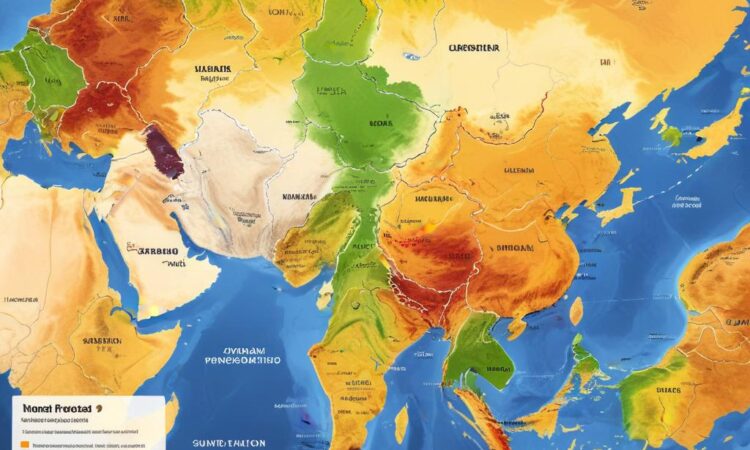Food Security and Global Food Prices: The Global Food Crisis
The world is facing a multifaceted food crisis, driven by a confluence of factors including the ongoing war in Ukraine, the impacts of climate change, and persistent supply chain disruptions. This crisis is threatening food security for millions around the globe, particularly in vulnerable populations, and pushing food prices to record highs. This article will delve into the intricate web of factors contributing to the crisis, analyze the significant impact on food prices and food security, and explore potential solutions to mitigate the challenges and ensure a more stable and equitable food system.
The War in Ukraine: A Catalyst for Crisis
The war in Ukraine has had a profound impact on global food markets. Ukraine and Russia are major exporters of wheat, barley, and sunflower oil, collectively accounting for a significant portion of global trade. The conflict has disrupted agricultural production and exports from these countries, leading to a sharp decline in grain supplies and a surge in global prices.
The war has also disrupted critical supply chains for fertilizers and other agricultural inputs, further exacerbating the crisis. Russia is a major producer and exporter of fertilizers, and sanctions imposed on the country have limited exports, driving up fertilizer prices worldwide. Higher fertilizer prices have reduced farmers’ ability to afford the necessary inputs to maintain crop yields, compounding the impact of the conflict.
Climate Change: A Growing Threat to Food Security
Climate change is increasingly impacting agricultural production and food security. Extreme weather events, such as droughts, floods, and heatwaves, are becoming more frequent and severe, leading to crop failures and reduced yields. These events are disrupting agricultural supply chains, pushing prices higher, and exacerbating food insecurity.
Climate change is also affecting the availability of water for irrigation, a critical input for agricultural production. In many regions, water resources are becoming scarce, leading to increased competition for water and reduced agricultural output. These challenges are particularly acute in regions that are already facing food insecurity.
Supply Chain Disruptions: A Persistent Challenge
Supply chain disruptions, both due to the pandemic and the war in Ukraine, have further aggravated the global food crisis. Shipping delays, port closures, and transportation bottlenecks have impacted the movement of food products from production to consumption, creating shortages and driving up prices.
The COVID-19 pandemic has also disrupted labor markets and agricultural production, further adding to the challenges faced by food systems. Labor shortages in key agricultural sectors have hampered production, and pandemic-related restrictions on movement have limited access to markets for producers.
The Impact on Food Prices
The combined impact of the war in Ukraine, climate change, and supply chain disruptions has led to a sharp increase in global food prices. The Food and Agriculture Organization of the United Nations (FAO) Food Price Index has reached record highs, with significant increases in prices for wheat, maize, and vegetable oils.
Higher food prices are disproportionately impacting low-income households, who often spend a larger share of their income on food. This has led to increased poverty and food insecurity in many regions, especially in developing countries that rely heavily on imported food.
The Impact on Food Security
The global food crisis has threatened food security for millions of people worldwide. The number of people facing hunger and malnutrition has risen sharply in recent years, and the World Food Programme estimates that over 345 million people are experiencing acute food insecurity. The crisis is particularly severe in regions that are already vulnerable to food insecurity, such as Africa, the Middle East, and South Asia.
The impact of the crisis on food security is multi-dimensional. It not only increases the number of people experiencing hunger but also exacerbates existing inequalities, disproportionately affecting vulnerable populations, such as women, children, and refugees.
Potential Solutions
Addressing the global food crisis requires a multifaceted approach that tackles both immediate needs and long-term solutions. Some potential solutions include:
Short-Term Measures:
- Increase food production: Governments can support farmers by providing subsidies, access to credit, and technical assistance to increase agricultural production.
- Improve food distribution: Strengthening food supply chains and improving logistics can help ensure that food reaches those who need it most.
- Provide humanitarian assistance: Governments and humanitarian organizations can provide food aid and other forms of assistance to address immediate needs.
- Address market volatility: Governments can use policies, such as price stabilization programs, to mitigate market volatility and ensure access to affordable food.
Long-Term Solutions:
- Invest in sustainable agriculture: Governments and organizations can support sustainable agriculture practices, such as climate-smart agriculture, to enhance resilience and mitigate the impacts of climate change.
- Promote food diversification: Encouraging the production and consumption of a wider variety of crops can reduce reliance on a small number of staples, making food systems more resilient to shocks.
- Reduce food waste: Minimizing food loss and waste along the food supply chain can significantly improve food security and reduce environmental impact.
- Address climate change: Addressing climate change through global efforts to reduce greenhouse gas emissions is essential to mitigate its impacts on food security.
- Strengthen food systems governance: Collaborative efforts between governments, the private sector, and civil society are crucial to address complex challenges in food systems.
Conclusion
The global food crisis presents a significant challenge for the world. Addressing this crisis requires a concerted effort from governments, international organizations, businesses, and individuals to build a more resilient, equitable, and sustainable food system. By prioritizing short-term responses to address immediate needs while investing in long-term solutions to build a more resilient and sustainable food system, we can work towards ensuring food security for all.

